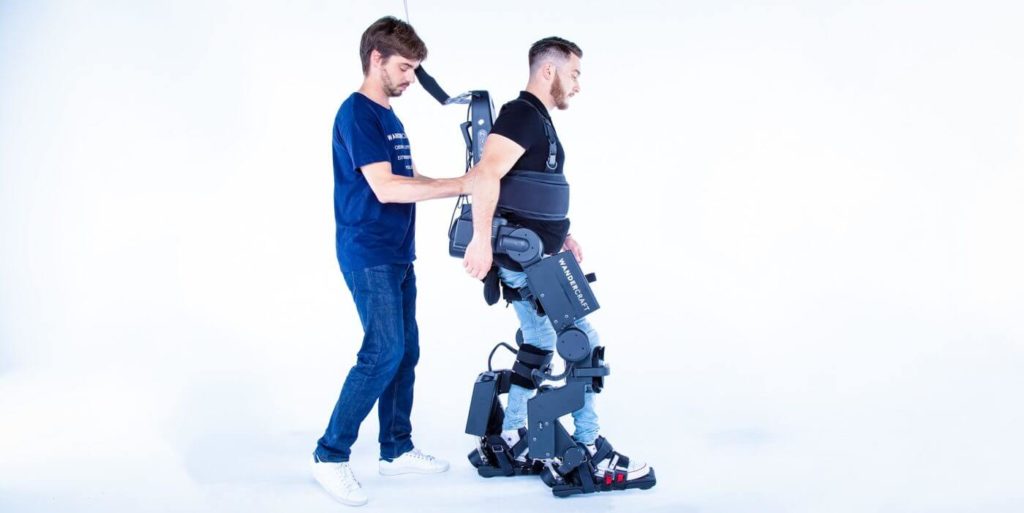The French health-tech company, Wandercraft, is paving the way for a new generation of exoskeletons through their exoskeleton, Atalante X. They have been working since 2012 to find a supplement for wheelchairs and other walking aids. With the exoskeleton, they hope to provide hands-free dynamic walking assistance to people. The company launched the exoskeleton this April and has raised $75.7 million in funding.
These exoskeletons aim to provide dynamic-legged locomotion in the real world to people with walking difficulties. Wandercraft also wants to help hospitals provide physical therapy and eventually help people to “get up, stand up, and walk again” not just in their homes but also outdoors. With this recent release, they have already equipped six European hospitals with Atalante X.
The self-balancing exoskeleton is designed to fit people of all shapes and sizes. This is why Wandercraft manufactured many varieties of Atalante X instead of just making one model that fits all. To customize the exoskeletons, the company’s mobile app has the option to feed the person’s details and the algorithm at their server will calculate the right kind of measurements and trajectories that will suit the person well. At the heart of the company lies the need to thrive in restoring bipedal motion to people.
Walking with the exoskeleton
The medical exoskeleton market was worth $179.40 billion in 2021 but is expected to grow by 43.70% this decade and is predicted to touch around $1,579.65 billion by 2028. The rising senior population is one of many reasons for the growth of this market. Another reason is the growing need for self-assisted walking aids. This year onwards, Wandercraft will make exoskeletons such as Atalante X for consumers. This is also what the future vision of the company holds.
The Atalante X comes equipped with artificial intelligence and algorithms that help restore the gait of people. It starts with a ‘small steps’ algorithm or program that allows a person to get used to the device. The exoskeletons are not designed to go beyond the walking capabilities of an individual. The next program is ‘foot rolling’ which also requires physical assistance and has a more anthropomorphized way of walking.
The anthropomorphization occurs due to the data gathered from the first program. The final program of Atalante X is called ‘turnaround’ where the person can now walk and turn around without much physical assistance.
The balancing act
The critical point in rehabilitating someone for walking is restoring the balance of the posture or gait and weight bearing. Unless the gait is balanced and upright, walking will always be challenging. Keeping this in mind, the team at Wandercraft designed Atalante X to adapt to the person’s weight and height while the bearer only has to bear their own weight. This learning is empowered by various algorithms focusing on optimal balance and walking rehabilitation.
Atalante X’s back support helps brace the spine and restores balance in people’s lives. Unlike wheelchairs or crutches, the exoskeleton lets the upper limbs be used for other purposes other than pushing the body forward. With time and practice, the exoskeleton will learn the movement of its wearer and emulate the same to ease walking.
Quelle: Wandercraft Introduces Atalante X to Assist in Mobility (techacute.com) (18.10.2022)
